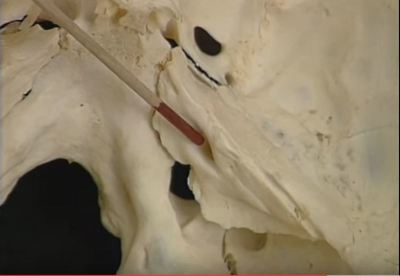

Airflow through the paranasal sinuses which creates the tones of our voices. This space is important for: Drainage of three of the paranasal sinuses the maxillary, frontal, and front (anterior) ethmoid sinuses. The middle meatus is the nasal passageway that lies between the inferior meatus and the middle meatus. synonyms: acoustic meatus, auditory canal, ear canal, external auditory canal. either of the passages in the outer ear from the auricle to the tympanic membrane. What does auditory meatus mean?Įxternal auditory canal Definitions of auditory meatus. The internal auditory meatus provides a passage through which the vestibulocochlear nerve (CN VIII), the facial nerve (CN VII), and the labyrinthine artery (an internal auditory branch of the anterior inferior cerebellar artery in 85% of people) can pass from inside the skull to structures of the inner ear and face. What is the internal acoustic meatus used for? The nerve then enters the parotid gland and breaks up into its five terminal branches: temporal, zygomatic, buccal, mandibular, and cervical. The facial nerve enters the internal auditory meatus, passes through the petrous part of the temporal bone, and exits the skull through the stylomastoid foramen. Does facial nerve go through internal acoustic meatus? The ear is comprised of the ear canal (also known as the outer ear), the middle ear, and the inner ear.
#INTERNAL AUDITORY MEATUS SKIN#
The ear canal, also called the external acoustic meatus, is a passage comprised of bone and skin leading to the eardrum. The adult human ear canal extends from the pinna to the eardrum and is about 2.5 centimetres (1 in) in length and 0.7 centimetres (0.3 in) in diameter. What is meatus of ear?Īnatomical terminology The ear canal (external acoustic meatus, external auditory meatus, EAM) is a pathway running from the outer ear to the middle ear. It includes the vestibulocochlear nerve (CN VIII), facial nerve (CN VII), the labyrinthine artery, and the vestibular ganglion. The internal auditory canal (IAC), also referred to as the internal acoustic meatus lies in the temporal bone and exists between the inner ear and posterior cranial fossa. What goes through internal acoustic meatus?


 0 kommentar(er)
0 kommentar(er)
